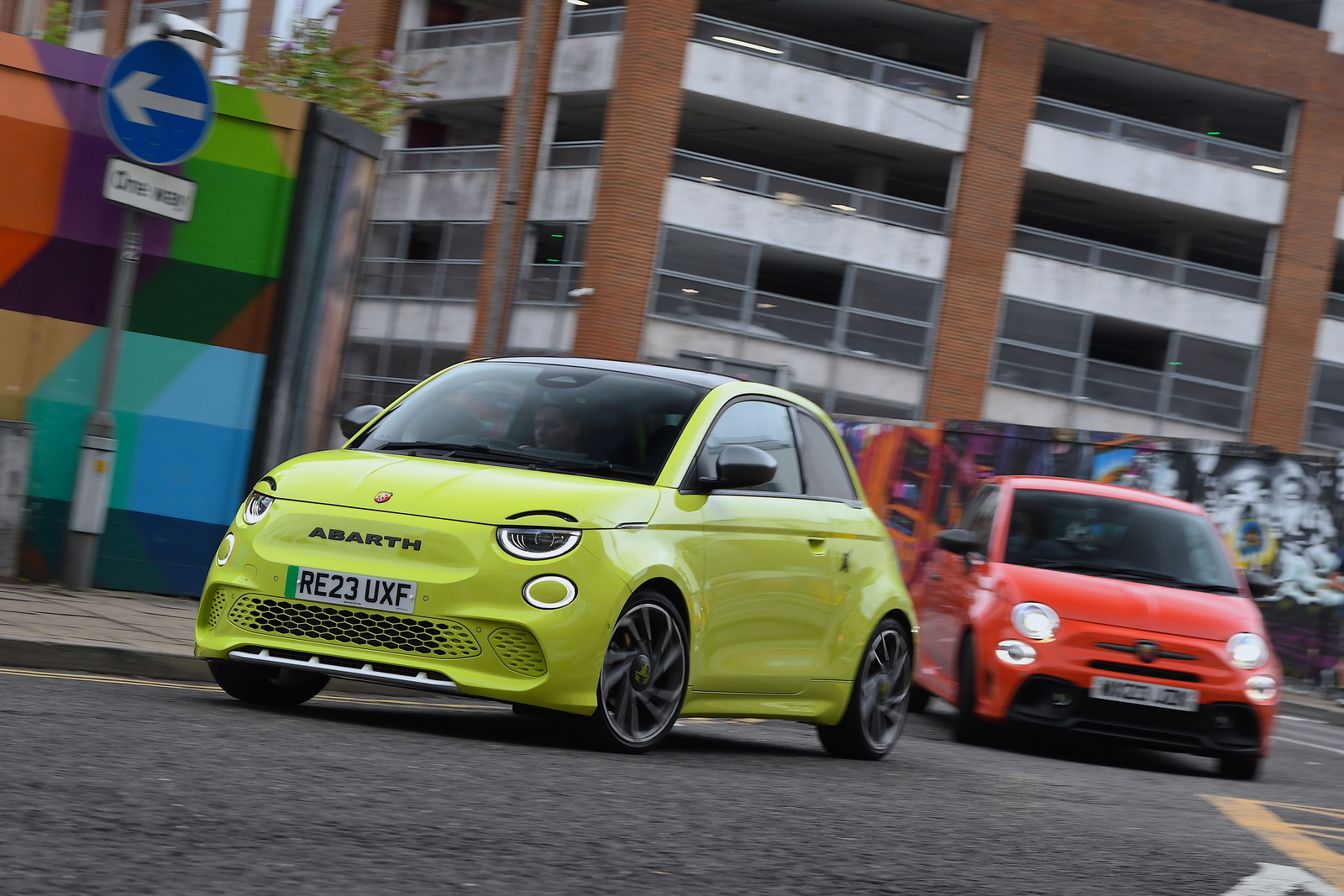But since then, Mini has come to market with the Cooper SE, the Renault 5-based Alpine A290 is inbound and Volkswagen is working on an electric follow-up to the Polo GTI.
And just a few weeks ago, it emerged that Stellantis was pausing production of the Fiat and Abarth 500e, because it simply couldn’t find homes for all the EVs that Turin was pumping out. That isn’t only a Fiat problem, of course, but it does raise questions about the ultimate desirability of this tiny, short-legged and relatively costly proposition.
In light of all those developments, it will be as annoying to you as it is to me that after several months and a few thousand miles at the helm, I still haven’t quite arrived at a prevailing judgement on the Abarth 500e.
On a purely objective basis, it’s easily done — and of course we rate cars conclusively every week in our reviews section.
According to the criteria applied there, I can tell you exactly how good this silent but violent supermini really is: it’s pretty fun to drive and looks brilliant, but its interior is a bit basic, it has a short range and it’s very expensive, resulting in an overall rating of three and a half stars.
But that judgement, based as it is on cold hard stats and rational comparisons, can’t really account for the influence of subjectivity and the most of the average B-road.
I remain convinced that part of this car‘s problem is that the Fiat 500e is already a jolly thing to punt around in, has a longer range and can be had for considerably less.
The bigger-battery version that Fiat is working on will only enhance that car’s appeal if it doesn’t bring too much of a cost increase. But I can’t help wondering if the 500e’s real saviour, ironically, will be the hybrid version that’s due in 2026.
It remains to be seen what the Abarth variant of that will look like, but here’s hoping that it will be every bit as lairy as the EV and just a pinch more engaging and useful.
Second Opinion

